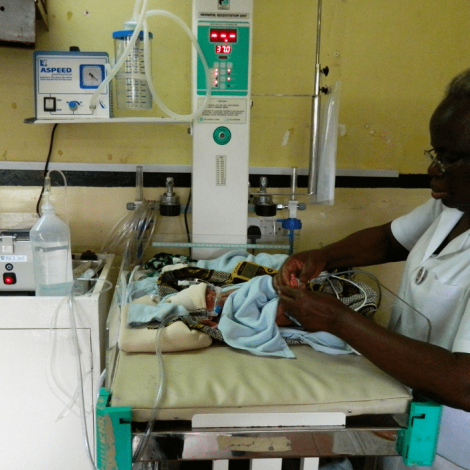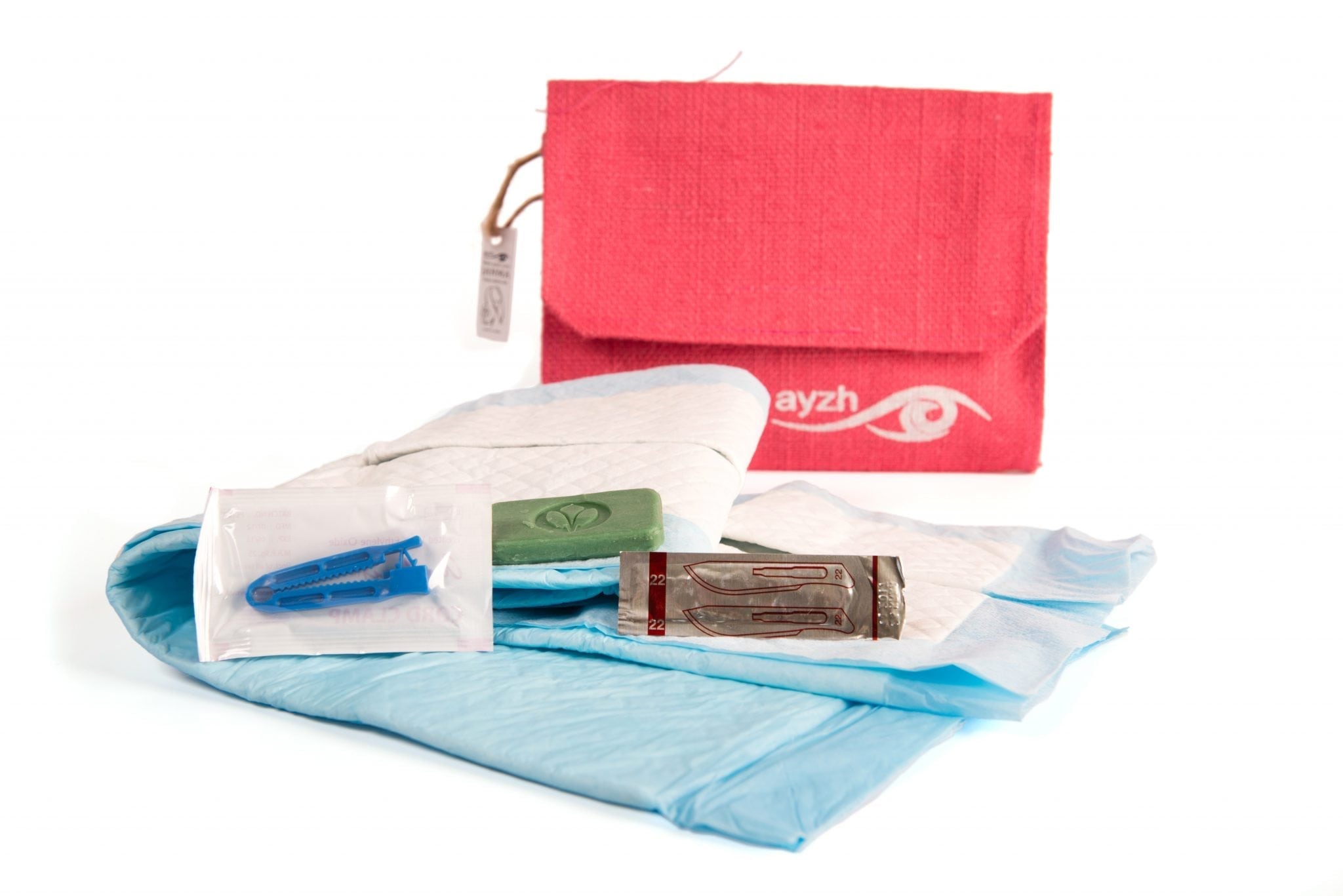There is no greater gift on Mother’s Day than ensuring that mother and child are both safe and healthy, but this goal is out of reach for millions around the world. One of the disheartening statistics is that, worldwide, a woman dies in childbirth every 90 seconds. Fortunately, technology can prevent many of those deaths. In honor of Mother’s Day, we present three maternal and child health technologies aptly engineered for sustainable use in low-resource settings.
Pumani CPAP
Medical Challenge: Premature infants and those with respiratory infections often require support to breathe properly.
Technical Challenge: Provide low-grade, high-frequency airway pressure using low-cost materials.
As an engineering student, Jocelyn Brown and her team at Rice University set out to design a low-cost method of delivering Continual Positive Airway Pressure (or CPAP) to infants facing respiratory challenges in low-resource settings.
“We tested various off-the-shelf fans and pumps and we found that aquarium pumps were actually perfectly suited to provide the required air flow for bubble CPAP at a very low cost,” Brown says.
Since 2010, the class project has evolved into a mass-manufactured medical device. Distribution has scaled up nationally throughout Malawi, garnering attention and accolades from USAID and The White House.
Over the course of four years, extensive field testing prompted design shifts towards durability. The original nasal prongs were not resilient enough for infants and children, so the team switched to commercially available nasal prongs despite the increase in cost. In a collaboration with 3rd Stone Design, the team replaced plastic shoebox housing with sheet metal, which is easier to manufacture in high volumes.
Cultural concerns also arose during clinical trials.
“In Malawi, many mothers associate oxygen therapy with death because many severely ill infants and children are treated with oxygen, and many of them do not survive,” Brown says. Infant treatment is now accompanied by maternal education to ease fears regarding respiratory support.
As for her favorite reaction from a nurse or patient?
“One of the Malawian pediatric nurses, Chrissie, who worked on the initial Pumani CPAP clinical study had a newborn grandson who was treated with the CPAP soon after his birth. She told us that because her grandson was born prematurely and was struggling to breathe, she immediately requested that the doctor treat her grandson with the Pumani CPAP. Her grandson was discharged a few days later, and now he’s a healthy two-year-old boy. Chrissie is now an enthusiastic advocate for CPAP and helps to train other nurses throughout Malawi on how to use the Pumani CPAP.”

Photo courtesy of JefferyYang.com
miraclefeet Brace
Medical Challenge: Clubfoot treatment requires daily bracing for five years , which can be a compliance challenge in many low-resource settings.
Technical Challenge: Create an extremely durable, child-friendly brace to ease the process for caretakers.
Clubfoot, in which the feet are rotated inward, is a relatively common congenital defect, but it’s undoubtedly one of the more arduous to treat. The non-surgical method, called the Ponseti treatment, method involves corrective bracing of a baby’s feet, slowly rotating them back to a normal position over the course of five years. Braces are often difficult to put on, and once the feet appear corrected, it’s tempting for parents to forego bracing before treatment is complete. When untreated, clubfoot may pose lifelong limits on physical activity: a challenge in countries where physical labor such as farming may be the primary source of income.
Jeffery Yang and Ian Connolly, two students in the Design for Extreme Affordability program at the Stanford Design School, worked with miraclefeet to design a brace capable of withstanding the wear and tear of any wriggling two-year old. Inspired by toddlers’ toys, they incorporated round edges and a bright purple plastic to create a child-friendly brace. At $20, the brace is within reach for patients in low-income countries, with plans for testing in India, Brazil, South Africa, and Nicaragua, in addition to the United States.
The brace is now mass manufactured using injection molding. At miraclefeet, the team has partnered with researchers at the Gillings School of Public Health at the University of North Carolina to evaluate impact, and is establishing a partnership with Medic Mobile to improve compliance using SMS reminders.

Photo courtesy of HealthProm
Maternity Saddle
Medical Challenge: Mountainous terrain and a dearth of health centers in rural Afghanistan lead many women to give birth at home.
Technical challenge: Develop a comfortable support system for transportation using hyper-local manufacturing.
Maternal mortality in Afghanistan stands at 460 deaths per 100,000 live births – one of the highest rates in the world. For comparison, that rate in European countries can range from one in 100,000 in Belarus to 12 in France. Postpartum hemorrhage, obstructed labor, and infection are frequent culprits, though all are surmountable if the mother is able to give birth in the presence of a skilled attendant.
In regions without road infrastructure, lower-tech methods of transportation, such as donkeys, may be the only option. But women in labor are often reluctant to balance uncomfortably for the hours on end it may take to reach the nearest health facility.
Peter Muckle, who calls himself a “woodcarver, archaeologist, and software developer” from Wales, designed a lightweight inflatable saddle to encourage women to travel from remote mountain villages to health centers to give birth. One of the most appealing aspects of this intervention is its simplicity (check out this YouTube demo for instructions to make your own inflatable cushion using nothing more than cardboard, a plastic sheet, and a hot nail). Canvas and burlap protect the inflatables, and this use of readily available materials enables sustainable and low-cost local manufacturing.
Peter has formed SaddleAid to expand designs catering to the elderly or the injured, and the saddle has been tested in four different villages in collaboration with HealthProm.

